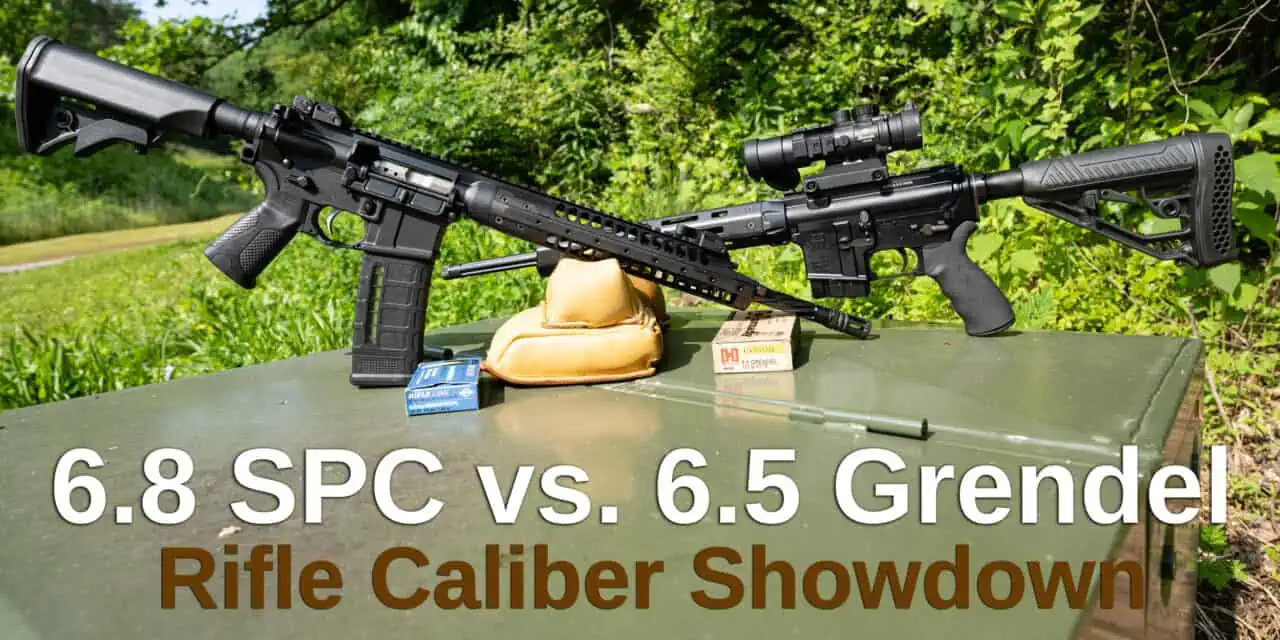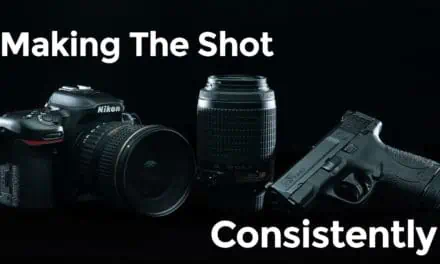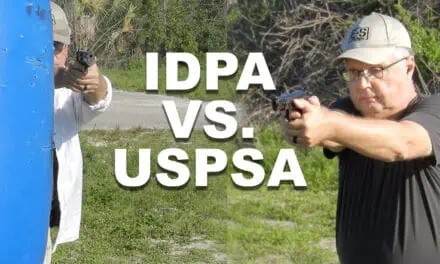The 5.56×45 (and its commercial equivalent the 223 Rem) has remained the king of American centerfire rifle cartridges thanks in no small part to its adoption by the United States Armed Forces in 1967. American firearm enthusiasts plow an inestimable number of 5.56 rounds into their AR rifles’ chambers every year. We sold approximately seven bajillion rounds of 5.56 last year alone, and we are just one of many ammunition retailers. (Don’t look up the others online. We heard their websites have computer viruses.)
A few cartridges have attempted to steal the 5.56’s crown over the decades. The 6.8mm Remington SPC is one of them. It may have become the Armed Forces’ new standard if not for Remington’s bungling of the round’s chamber design during its launch.
The 6.5mm Grendel is another, but it just didn’t represent a dramatic enough improvement over the 5.56 for the Armed Forces to justify forking over money for new rifle parts.
Neither 6.8 SPC or 6.5 Grendel ammunition are nearly as easy to find as 5.56 – but if you’re looking for a new cartridge to convert your AR to, both have plenty to offer. Both have a longer effective range than 5.56 ammo. Both will dump more energy into a target at any distance. Finally, both are easy to adapt a 5.56 rifle for.
But that begs the big question: If you could only choose one or the other, which would make the better pick? Let’s compare the performance of the 6.8 SPC vs 6.5 Grendel and find out!
Cartridge Dimensions
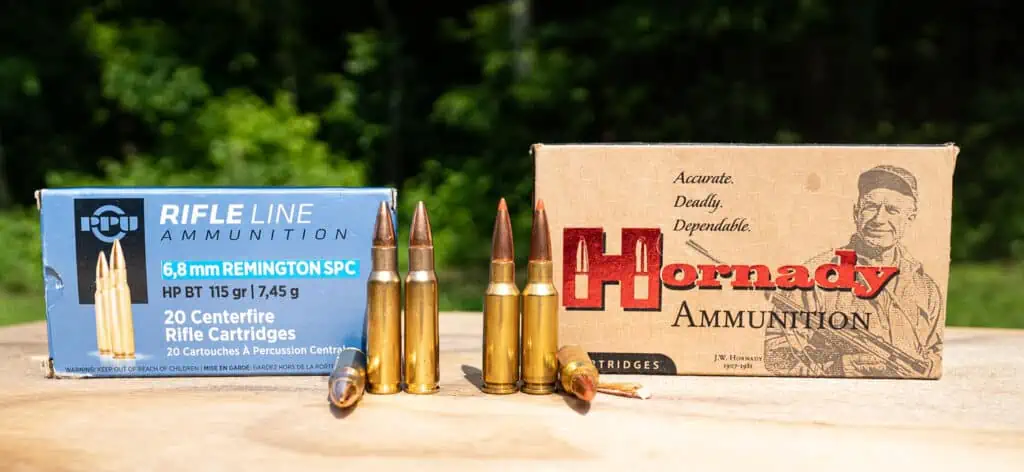
| 6.8 SPC | 6.5 Grendel | |
|---|---|---|
| Parent case | 30 Rem | 220 Russian |
| Case type | Rimless, bottleneck | Rimless, bottleneck |
| Bullet diameter | 0.277 in | 0.264 in |
| Neck diameter | 0.306 in | 0.293 in |
| Shoulder diameter | 0.402 in | 0.428 in |
| Base diameter | 0.422 in | 0.439 in |
| Rim diameter | 0.422 in | 0.440 in |
| Case length | 1.687 in | 1.520 in |
| Overall length | 2.260 in | 2.260 in |
| Case capacity | 34.8–36.9 gr H2O | 35.0 gr H2O |
| Maximum pressure | 55,000 psi | 52,000 psi |
Right away you’ll notice that 6.8 SPC ammunition and 6.5 Grendel are similar in size. They’re identical in length at 2.260”, which is not coincidentally the same length as the 5.56. Both were designed to fit in the same STANAG magazines that the Armed Forces already has millions of, after all. The 6.8 SPC and 6.5 Grendel could theoretically share the same case capacity as well. They don’t produce radically different amounts of chamber pressure. Of course, the glaring difference between the two rounds is their bullets.
The 6.8 SPC is loaded with a 0.277” diameter projectile; the 6.5 Grendel’s is 0.264”. Now, speaking very generally, the narrower bullet tends to have a higher ballistic coefficient – essentially meaning that it is more effective at overcoming air resistance in flight. All things being equal, the 6.5 Grendel’s longer, narrower bullet should exhibit a flatter trajectory and conserve more momentum downrange.
Ballistic Comparison
Velocity
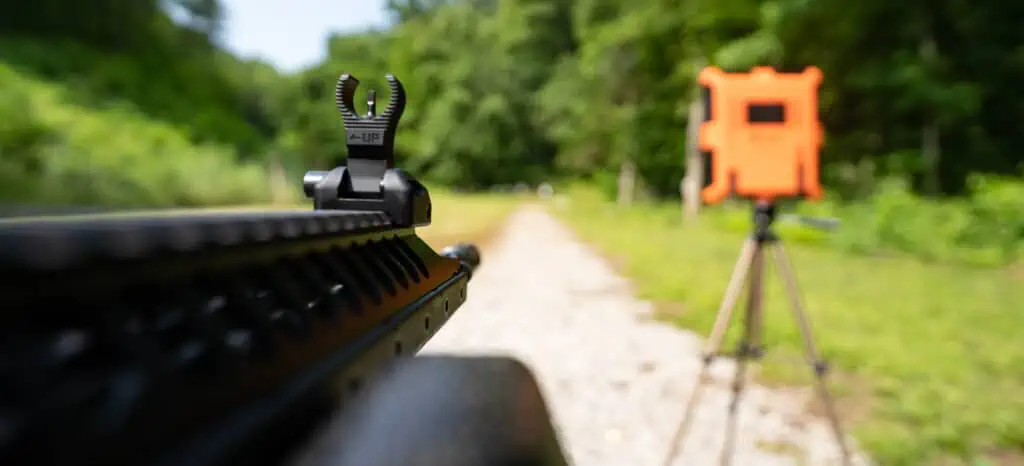 We mentioned earlier that if all other variables were equal, then the 6.5 Grendel’s more ballistically efficient bullet should exhibit a flatter trajectory. But the 6.5 Grendel has even more blessings than a more ballistically efficient bullet. It is typically loaded with heavier bullets. It also typically achieves a higher muzzle velocity. Essentially the 6.5 Grendel gives you a bullet that is (A) more aerodynamic, (B) faster-moving, and (C) heavier, which enables it to conserve superior momentum downrange.
We mentioned earlier that if all other variables were equal, then the 6.5 Grendel’s more ballistically efficient bullet should exhibit a flatter trajectory. But the 6.5 Grendel has even more blessings than a more ballistically efficient bullet. It is typically loaded with heavier bullets. It also typically achieves a higher muzzle velocity. Essentially the 6.5 Grendel gives you a bullet that is (A) more aerodynamic, (B) faster-moving, and (C) heavier, which enables it to conserve superior momentum downrange.
| 6.8 SPC Fed. Fusion 115gr SP | 6.5 Gren Fed Fusion 120gr SP | 6.8 SPC Fed. American Eagle 115gr TMJ | 6.5 Gren Hornady Frontier 123gr FMJ | 6.8 SPC Hornady Custom 120gr SST | 6.5 Gren Hornady Custom 123gr SST | |
|---|---|---|---|---|---|---|
| Muzzle velocity (fps) | 2470 | 2600 | 2675 | 2580 | 2460 | 2580 |
| Velocity @ 100 yds | 2252 | 2349 | 2447 | 2377 | 2254 | 2413 |
| Velocity @ 200 yds | 2045 | 2113 | 2230 | 2183 | 2058 | 2253 |
| Velocity @ 300 yds | 1850 | 1891 | 2024 | 1998 | 1872 | 2099 |
| Velocity @ 400 yds | 1668 | 1685 | 1830 | 1824 | 1698 | 1951 |
| Velocity @ 500 yds | 1501 | 1498 | 1650 | 1660 | 1537 | 1809 |
| Velocity @ 600 yds | 1352 | 1333 | 1485 | 1509 | 1392 | 1676 |
| Velocity @ 700 yds | 1225 | 1197 | 1338 | 1372 | 1265 | 1550 |
| Velocity @ 800 yds | 1124 | 1093 | 1213 | 1253 | 1160 | 1434 |
| Velocity @ 900 yds | 1048 | 1018 | 1115 | 1155 | 1079 | 1328 |
| Velocity @ 1000 yds | 990 | 961 | 1042 | 1078 | 1017 | 1235 |
With all of those boons working in its favor, the 6.5 Grendel reliably exhibits a flatter trajectory than the 6.8 SPC. This isn’t always necessarily the case – especially if you’re comparing a 6.5 Grendel round loaded with a heavier bullet to a 6.5 SPC round that is loaded with a lighter one. But the 6.5 Grendel’s heavier bullet’s greater inertia does give it a marked advantage over longer distances, as it imbues the trajectory with greater resistance against wind drift.
| 6.8 SPC Fed. Fusion 115gr SP | 6.5 Gren Fed Fusion 120gr SP | 6.8 SPC Fed. American Eagle 115gr TMJ | 6.5 Gren Hornady Frontier 123gr FMJ | 6.8 SPC Hornady Custom 120gr SST | 6.5 Gren Hornady Custom 123gr SST | |
|---|---|---|---|---|---|---|
| G1 ballistic coefficient | 0.385 | 0.346 | 0.385 | 0.427 | 0.407 | 0.520 |
| G7 ballistic coefficient | 0.197 | 0.177 | 0.195 | 0.216 | 0.208 | 0.261 |
| Elevation @ 100 yds | 10.79 | 10.00 | 8.91 | 9.37 | 10.66 | 8.79 |
| Elevation @ 200 yds | 16.17 | 15.14 | 13.46 | 14.05 | 15.92 | 13.09 |
| Elevation @ 300 yds | 13.21 | 12.47 | 11.00 | 11.41 | 12.94 | 10.51 |
| Elevation @ 400 yds | 0.04 | 0.02 | 0.02 | 0.03 | 0.00 | 0.03 |
| Elevation @ 500 yds | -25.67 | -24.73 | -21.38 | -21.83 | -25.03 | -19.61 |
| Elevation @ 600 yds | -66.88 | -65.03 | -55.6 | -56.35 | -64.83 | -49.89 |
| Elevation @ 700 yds | -127.14 | -124.95 | -105.65 | -106.18 | -122.63 | -92.58 |
| Elevation @ 800 yds | -210.59 | -209.15 | -175.16 | -174.52 | -202.19 | -149.77 |
| Elevation @ 900 yds | -321.73 | -322.61 | -268.29 | -265.02 | -307.56 | -223.90 |
| Elevation @ 1000 yds | -464.30 | -469.40 | -389.56 | -381.79 | -442.99 | -317.75 |
Is the 6.8 SPC inaccurate? Is the 6.5 Grendel’s advantage overwhelming? No and no. But if you’re only concerned with placing the tightest shot groups possible, then the 6.5 Grendel would represent your better bet.
Energy of 6.8 SPC vs 6.5 Grendel
| 6.8 SPC Fed. Fusion 115gr SP | 6.5 Gren Fed Fusion 120gr SP | 6.8 SPC Fed. American Eagle 115gr TMJ | 6.5 Gren Hornady Frontier 123gr FMJ | 6.8 SPC Hornady Custom 120gr SST | 6.5 Gren Hornady Custom 123gr SST | |
|---|---|---|---|---|---|---|
| Muzzle energy (ft lbs) | 1558 | 1802 | 1828 | 1818 | 1613 | 1818 |
| Energy @ 100 yds | 1295 | 1471 | 1529 | 1543 | 1354 | 1591 |
| Energy @ 200 yds | 1068 | 1190 | 1270 | 1302 | 1128 | 1387 |
| Energy @ 300 yds | 874 | 953 | 1046 | 1091 | 934 | 1203 |
| Energy @ 400 yds | 710 | 757 | 856 | 908 | 768 | 1039 |
| Energy @ 500 yds | 575 | 598 | 695 | 753 | 630 | 894 |
| Energy @ 600 yds | 467 | 474 | 563 | 622 | 516 | 767 |
| Energy @ 700 yds | 383 | 382 | 457 | 514 | 426 | 656 |
| Energy @ 800 yds | 323 | 318 | 376 | 429 | 359 | 562 |
| Energy @ 900 yds | 281 | 276 | 318 | 364 | 310 | 482 |
| Energy @ 1000 yds | 250 | 246 | 277 | 317 | 276 | 416 |
The 6.5 Grendel’s heavier, faster moving bullet also means that it usually transfers superior energy to its target. It’s easy to understand why, as the amount of energy a bullet can transfer to its target is solely determined by two variables: mass, and velocity at the moment of impact. But once again, the differences in the two rounds’ “stopping power” isn’t all that dramatic.
For reference, let’s compare the exact distances at which all six of these rounds would retain exactly 1,000 ft lbs of energy (that’s the minimum many authorities advise for ethical whitetail hunting, so it’s a good benchmark to consider). If we only look at the average distances at which these rounds would conserve 1,000 ft lbs of energy, then the 6.8 SPC averages 273 yards. For the 6.5 Grendel, it’s 352 yards. And the 6.5 Grendel’s effective range for deer hunting isn’t just greater than the 6.8 SPC’s. It will transfer more energy to its target than the 6.8 SPC at any given range as well. It just hits harder, so if you want the more powerful round it’s the 6.5 Grendel for you.
Recoil
| Recoil Energy (ft lbs) | |
|---|---|
| 6.8 SPC Federal Fusion 115gr SP | 7.25 |
| 6.8 SPC Federal American Eagle 115gr TMJ | 8.10 |
| 6.8 SPC Hornady Custom 120gr SST | 7.65 |
| 6.5 Grendel Federal Fusion 120gr SP | 9.03 |
| 6.5 Grendel Hornady Frontier 123gr FMJ | 9.24 |
| 6.5 Grendel Hornady Custom 123gr SST | 9.24 |
We should expect the more powerful cartridge to have accordingly stronger recoil. Is this true for the 6.5 Grendel? Let’s calculate the comparison rounds’ objective recoil energy to find out. You only need four variables to calculate recoil energy: muzzle velocity, bullet weight, propellant weight and rifle weight. For the sake of a fair comparison let us assume we are firing two 7.5 pound rifles. Let’s also reasonably assume all 6.8 SPC rounds have 36 grains of propellant, and all 6.5 Grendel rounds have 30. No surprises here: The 6.5 Grendel generates more recoil energy.
That would make the 6.8 SPC your better choice if you are trying to avoid discomfort during a long range day, and it would also make the 6.8 SPC easier to fire more rapidly – less muzzle rise means a shorter amount of time you have to spend restoring your aim on the target.
Neither of these rounds are uncomfortable to fire, though. They both generate less than 15 ft lbs of recoil energy (which many consider to be the acceptable threshold for a round they would want to fire repeatedly). In fact, you may not be able to perceive a difference between the two cartridges’ recoil at all.
6.8 SPC vs 6.5 Grendel Ammo Pricing
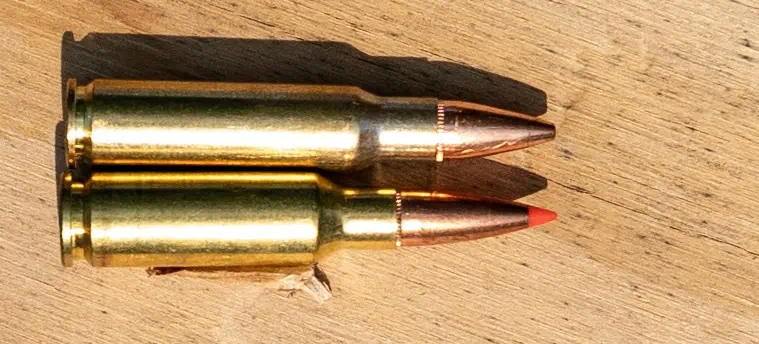
6.8 SPC (top) with a 6.5 Grendel round (below).
The ammo market’s ebbs and flows may mean that one type of ammunition is easier to find than the other at any given time, but 6.8 SPC ammo and 6.5 Grendel are both popular enough to assure the steady supply of ammo you need for target practice and hunting. They’re priced approximately the same as well. We should point out that the 6.5 Grendel’s popularity in Eastern Europe did encourage Wolf to start making a cheap steel-cased version of it. Unfortunately, the current ban on Russian ammo imports is making steel-cased 6.5 Grendel increasingly difficult to locate.
The Summary
The 6.5 Grendel is more powerful than the 6.8 SPC. It usually provides the flatter trajectory and greater resistance to wind deflection that simplify firing over longer distances. The 6.5 Grendel’s bullet also packs a harder punch. That’s why its effective range for deer hunting is about 75 yards farther out. You may note stronger recoil than you would have while firing the weaker 6.8 SPC, but the difference isn’t extreme.
All in all, if you want to upgrade your AR for better accuracy over longer distances, the 6.5 Grendel makes the better pick. But if you would prefer something with lighter recoil – a welcome advantage if you would ever use your AR for home defense – then the 6.8 SPC (which is still significantly more powerful than the tried-and-true 5.56) makes a great option.

